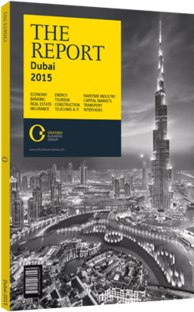Payment gateways remain an obstacle to growth in Dubai media
A major growth segment in the regional media industry in recent years has been pay-TV, which has made significant inroads into territory once dominated by free-to-air (FTA). Dubai has been a centre for this, with its highly media-savvy and international population a major market. The official encouragement given to the media sector – via free zones such as Dubai Media City (DMC), Dubai Studio City and the International Media Production Zone – has also helped the segment along.
Yet, pay-TV still faces some important challenges. Some are those faced by any e-commerce business at the current stage of market development in the Gulf and wider MENA region, while others are more closely connected to the fast-paced development of new platforms and ways of doing business in the digital world. Nonetheless, sector insiders remain confident that pay-TV is set for further growth, with a period of consolidation now leading to a period of closer collaboration as outfits seek to boost their market share.
Players & Audiences
In terms of the MENA region, market analysis by IHS gave 4.35m pay-TV subscribers at year-end 2013, a penetration rate of 9.4%. This represented 14.13% annual growth in subscriber numbers and 11.2% growth in year-on-year market share.
Most of this market is concentrated in the Gulf, with around two-thirds of subscribers living in GCC countries. The most saturated market within the GCC is the UAE, which had a penetration rate of 85% in 2013, according to IHS, in contrast to the least saturated market in the region – Egypt – where the figure was 2.4%. The UAE is also first in terms of the internet provider TV (IPTV) platform for pay-TV, with some 70.82% of all pay-TV subscriptions using IPTV by year-end 2013.
One of the strong performers in terms of regional growth and the UAE’s pay-TV market is Dubai’s Orbit Showtime Network (OSN). This company – the result of a 2009 merger between Showtime and Orbit – managed to grow its subscriber base 32.3% between Q4 2012 and Q4 2013. OSN’s main regional rival is Qatar’s beIn Sports Arabia, previously Al Jazeera Sport, which expanded dramatically in 2009 with the acquisition of all the ART sports channels. This gives beIn the coverage rights to many lucrative football leagues and competitions, including FIFA matches, the English Premier League and the Italian La Liga.
While beIn dominates the MENA sports market, OSN has more varied content. Headquartered in DMC, it acquired Pehla Media & Entertainment in 2013, giving it some 40 South Asian-language channels, some of which have proven popular with the large subcontinent expatriate community in the Gulf. OSN now has 140 channels available in 24 countries. Hollywood, Bollywood and increasingly Jazzwood – or Arabic-language content – are in the portfolio, along with news and entertainment channels such as Sky and Discovery.
According to the IHS report, OSN and beIn together hold 80-85% of the total MENA satellite pay-TV market, with satellite accounting for about three-quarters of the region’s pay-TV subscriptions.
Challenges
Yet, for all this success, pay-TV faces some challenges. First, there is the continued health of FTA, with around 1000 free channels available in the UAE alone, when both licensed and unlicensed broadcasters are included. The shift towards digital distribution of these channels also presents a challenge, with the pay-TV companies now following this migration. OSN has a catch-up service for subscribers and OSN Play, which is an internet movie package, rivalling other recent entrants into the field such as icFlix and Istikana.
One of the main challenges, however, is the plethora of payment gateways that pay-TV channels must engage with. For an outfit to operate across the MENA region, 40 different payment gateways are needed, OSN insiders told OBG. MENA customers – even in the GCC where banking is well established – also prefer to pay cash, rather than use credit or debit cards, which also adds a constraint on market development. That said, sector players remain confident that these obstacles are being gradually tackled, while there remains plenty of upside across the region for future growth.
You have reached the limit of premium articles you can view for free.
Choose from the options below to purchase print or digital editions of our Reports. You can also purchase a website subscription giving you unlimited access to all of our Reports online for 12 months.
If you have already purchased this Report or have a website subscription, please login to continue.

